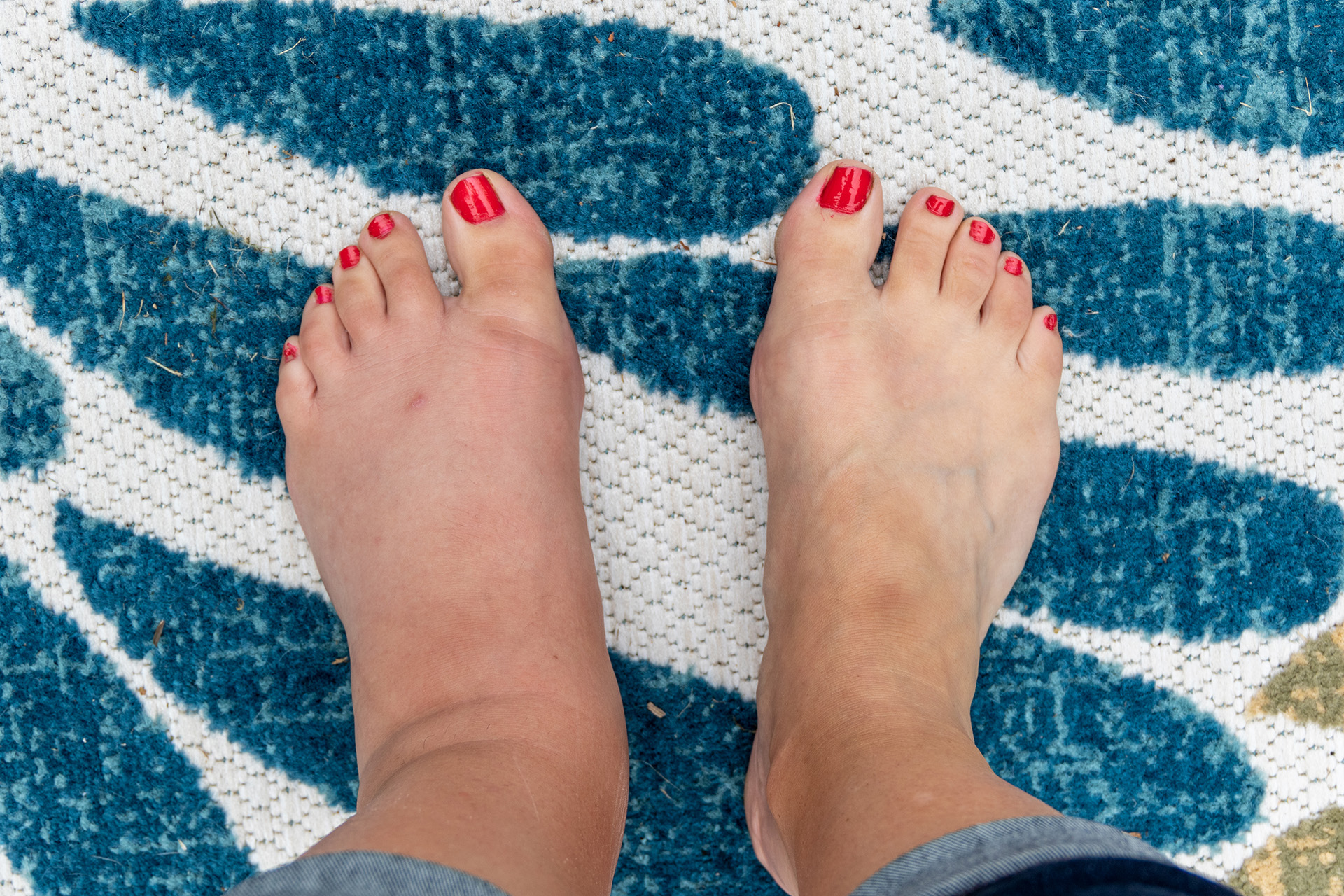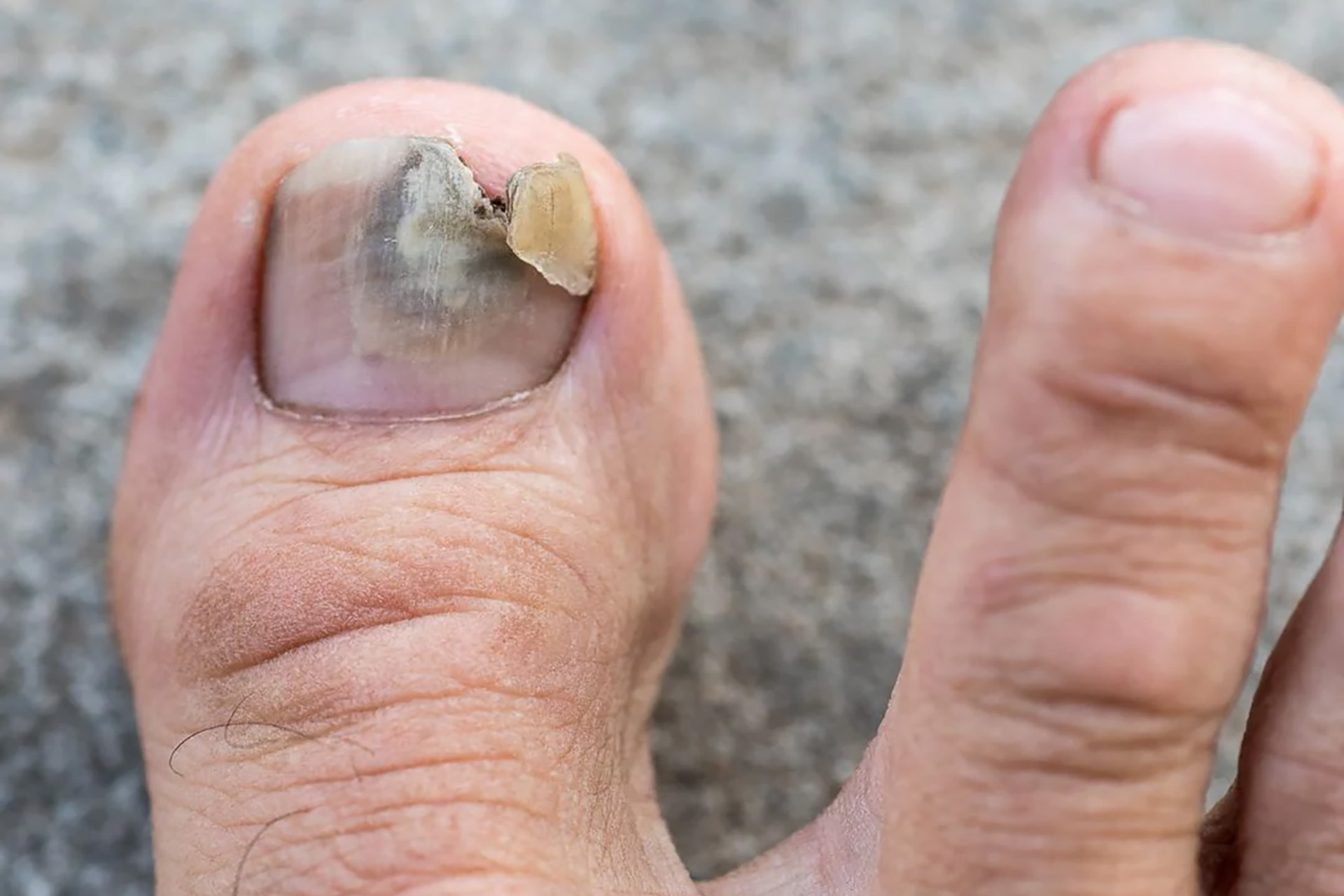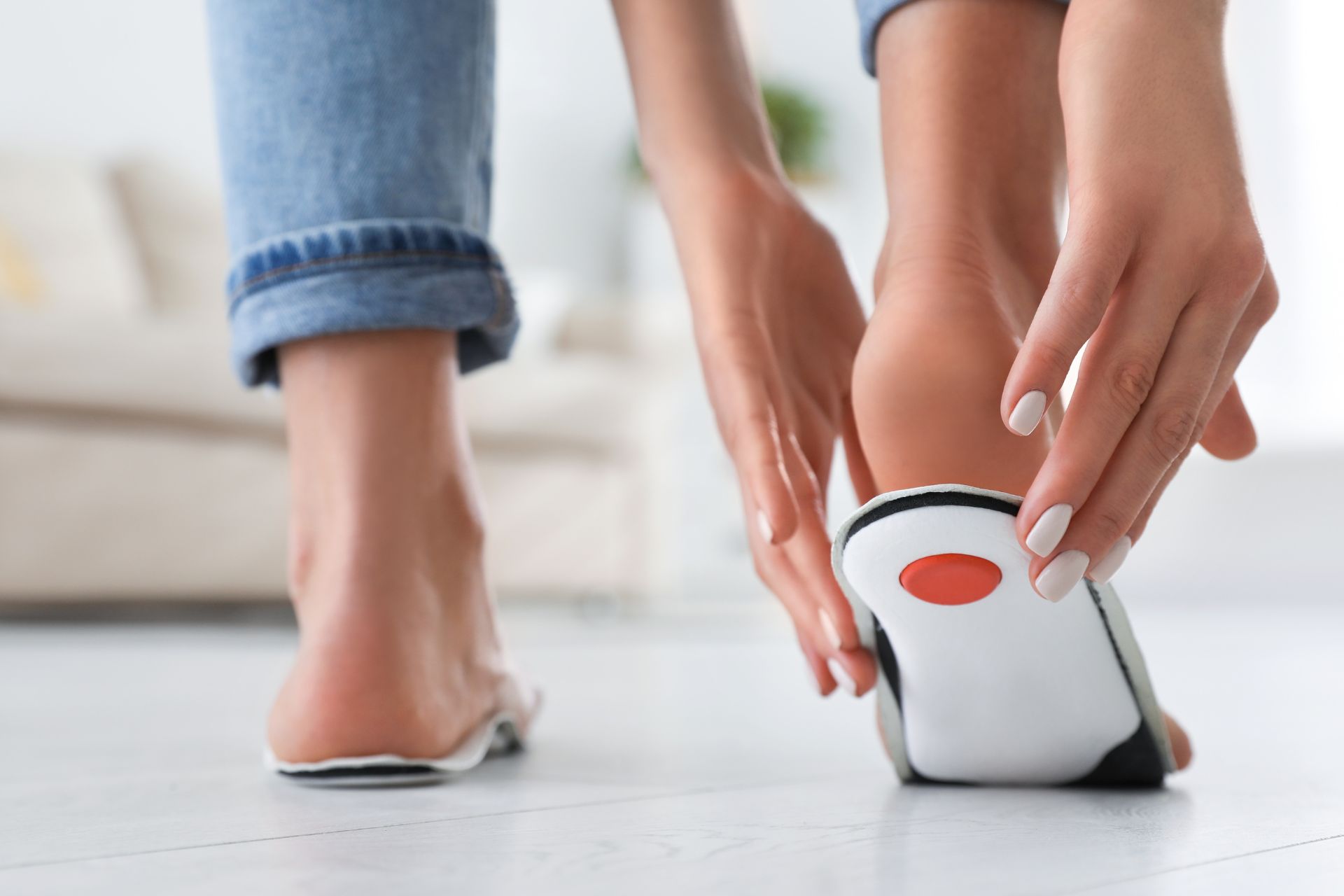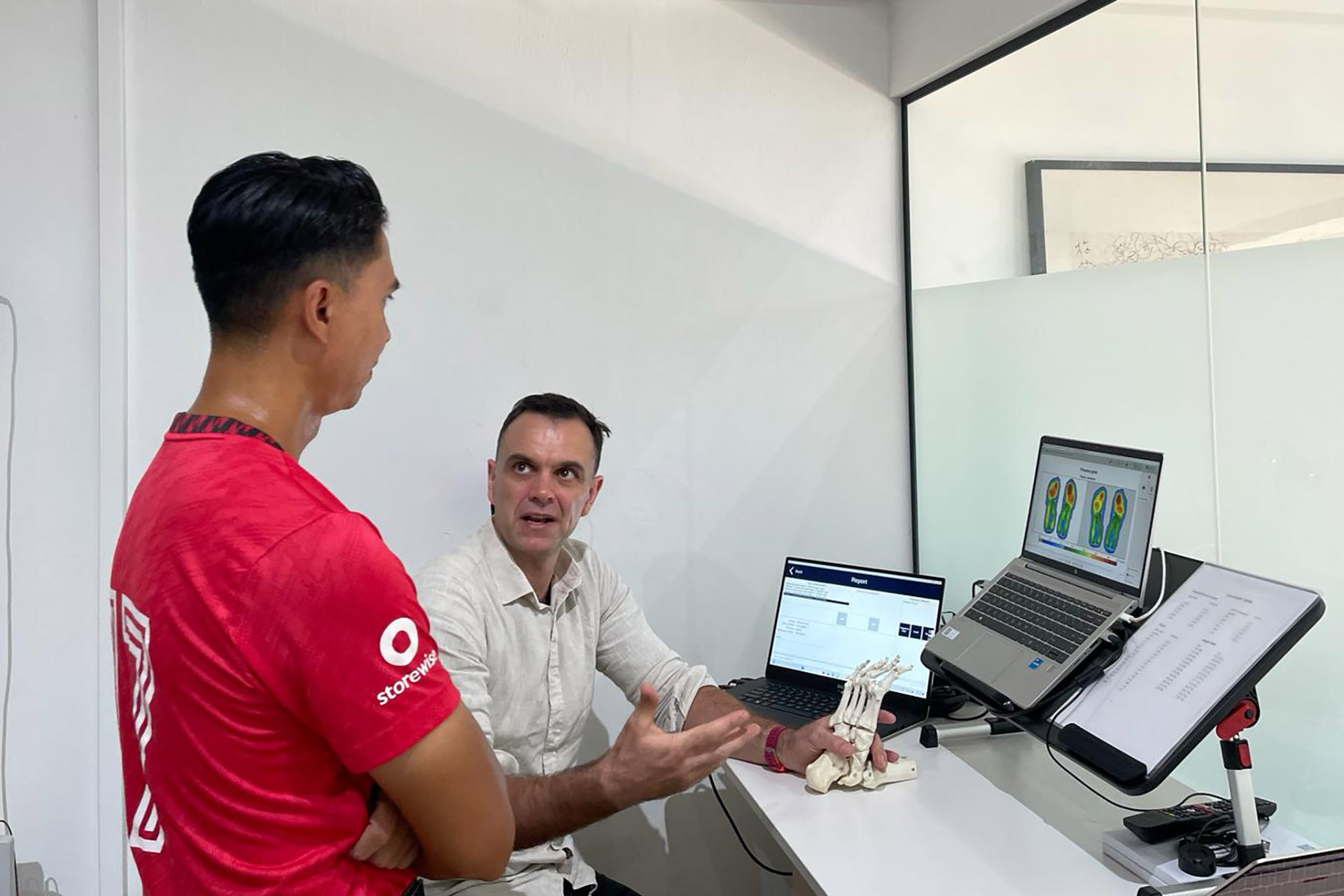Your day may be going fine, but then suddenly, you get a sharp, stabbing sensation that hits your ankle out of nowhere. It’s sudden, intense and unmistakable. If you’ve experienced this ankle pain that seems to come from deep within your ankle joint and makes even the weight of a bed sheet or the lightest touch unbearable, you may have ankle gout.
Thousands of people with gout in their ankles can’t walk, yet it remains one of the most misunderstood forms of inflammatory arthritis. The ankle’s complex structure creates an environment in which the needle-sharp urate crystals of gout accumulate, resulting in a distinct pattern of pain and dysfunction compared to gout in other joints.
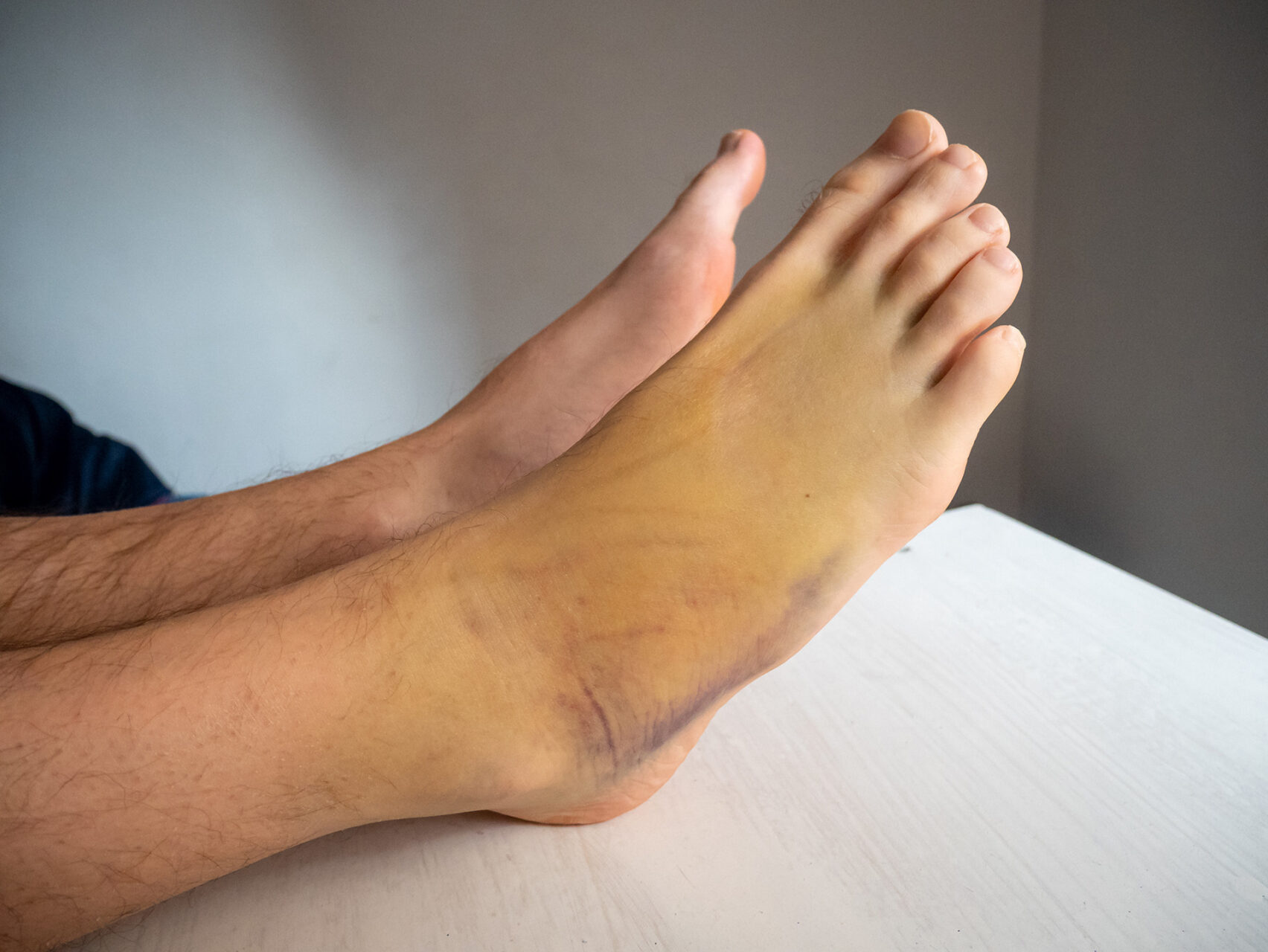
The Science Behind Ankle Gout Development
Gout happens when your body produces too much uric acid or can’t eliminate it efficiently through the kidneys. The body naturally produces uric acid when it breaks down purines, compounds found in certain foods such as red meat, organ meat, seafood and drinks with fructose. Under normal circumstances, uric acid is dissolved in the blood and excreted through the urine. When this process fails, urate crystals accumulate in the joints. This is what causes gout in the ankle.
As a weight-bearing joint that’s under constant stress and micro-trauma, the ankle develops small areas of tissue damage where uric acid crystals can deposit. Plus, certain areas of the ankle have reduced circulation and are cooler in temperature, making it easier for uric acid to crystallise. When your immune system encounters these crystals, it launches an aggressive inflammatory response, mistaking them for foreign invaders, triggering the intense pain of a gout attack.
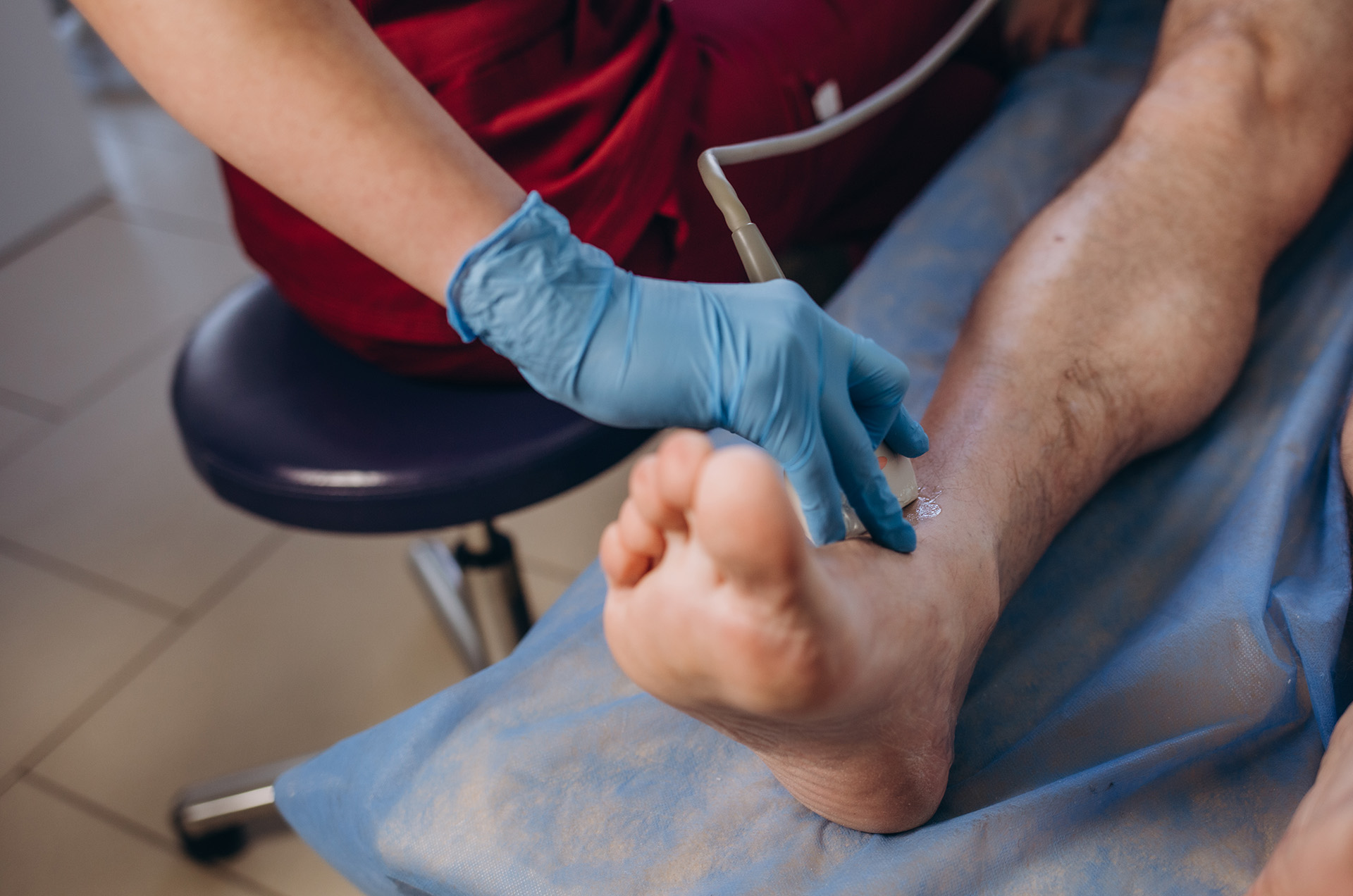
Recognising Ankle Gout Symptoms
Signs of gout in the ankle are different from those of other ankle conditions. Gout attacks can affect any joint. In the ankle, the pain starts as a sudden deep throbbing ache that rapidly intensifies into sharp stabbing sensations. Unlike a sprained ankle or other mechanical injuries, ankle gout pain often strikes during periods of rest and frequently wakes sufferers up in the early hours of the morning.
The affected ankle becomes swollen, with the skin stretched, shiny, and often taking on a reddish or purplish hue. The area feels warm to the touch – even the lightest touch, such as a sock or bed sheet, can trigger waves of intense joint pain. This extreme sensitivity, known as allodynia, is a hallmark of gout in the ankle tissues. Many patients describe the sensation as if their ankle is “on fire” or being “stabbed with glass shards”. The pain typically peaks within 12 to 24 hours of onset. During this period, walking or bearing weight is impossible. Even when the acute attack subsides, many experience lingering stiffness and reduced range of motion that can last for days or weeks. Other symptoms that may accompany ankle gout include fever, fatigue and a general feeling of malaise.
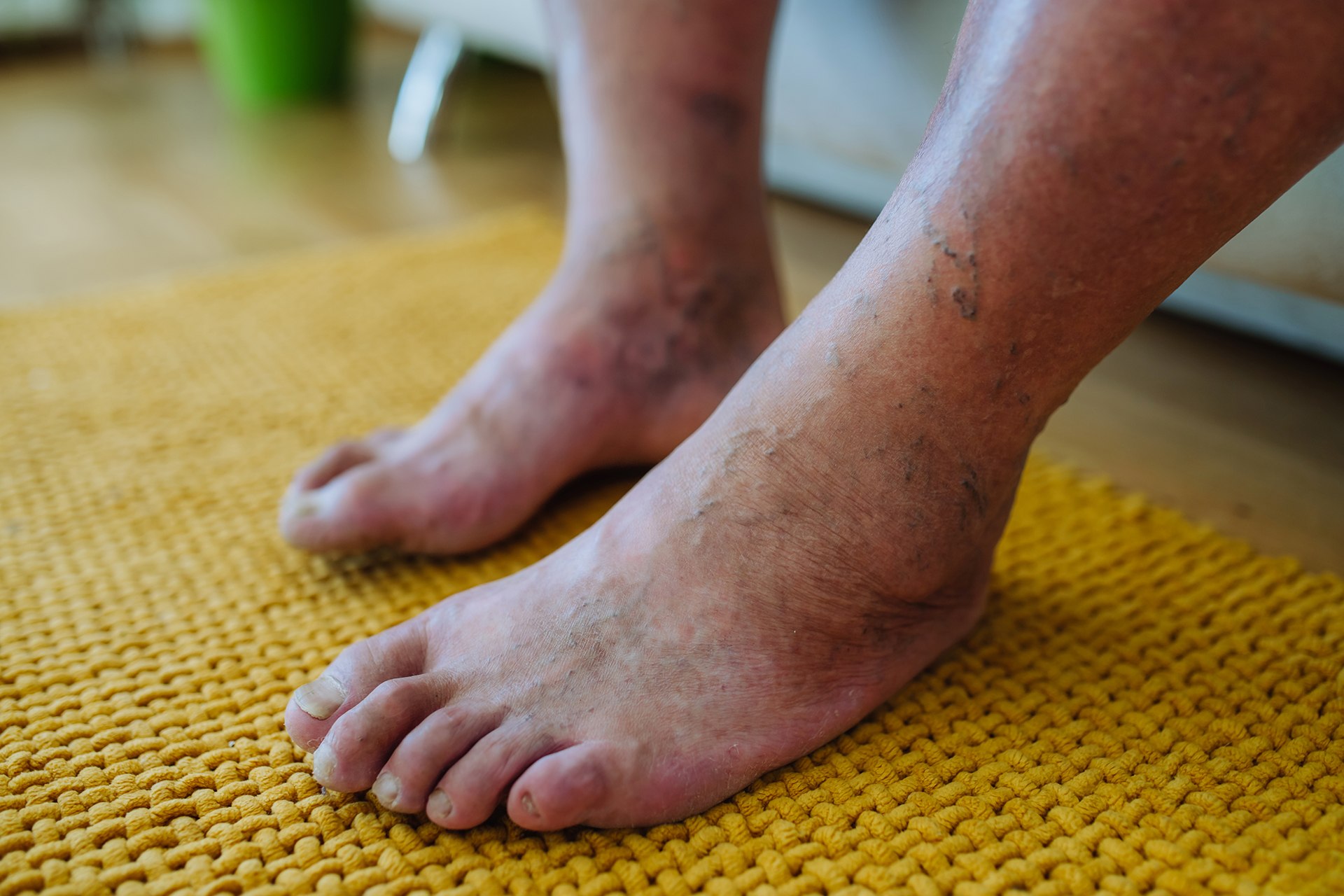
The Four Stages of Ankle Gout
Understanding the progression of gout in the ankle joint helps both patients and healthcare providers develop the right treatment plan. The condition progresses through four stages, each requiring a different approach to management and care:
- Stage One: Asymptomatic Hyperuricaemia In this silent phase, uric acid levels rise in your bloodstream without causing any symptoms. At this point, the urate crystals start to form in the ankle joint spaces, but your body hasn’t mounted an inflammatory response yet. This stage can last for a year, so regular monitoring is crucial for those at risk of developing gout in the ankle joint.
- Stage Two: Acute Ankle Gout An acute ankle gout attack strikes suddenly and severely, often without warning. The ankle becomes extremely painful, swollen, and inflamed as the immune system reacts to the accumulation of urate crystals. This stage requires immediate intervention to reduce pain and inflammation and prevent further crystal deposition.
- Stage Three: Intercritical Gout Between attacks, you may experience periods of relative comfort, but this doesn’t mean the condition has resolved. Uric acid continues to accumulate in the ankle tissues, setting the stage for future, often more severe attacks. Without preventive strategies, recurrent attacks or repeated attacks can occur, increasing the risk of joint and tendon damage.
- Stage Four: Chronic Tophaceous Gout If left unmanaged, chronic gout develops with large deposits of urate crystals called tophi forming in and around the ankle joint. These visible lumps not only cause chronic pain but can also lead to permanent joint damage and deformity, significantly impacting ankle function and mobility.
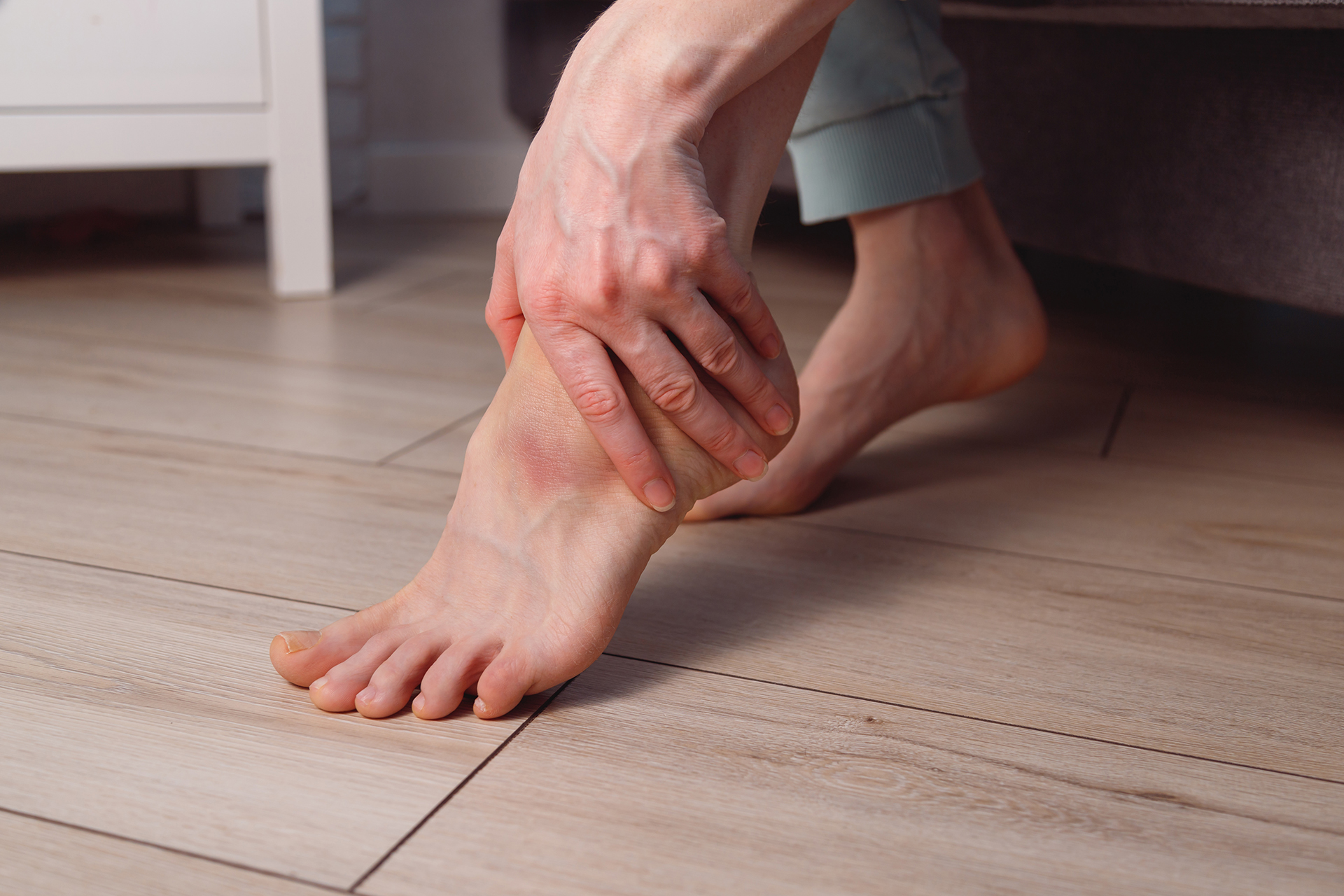
Ankle Gout Diagnosis
Diagnosing gout in the ankle requires a combination of clinical expertise and targeted diagnostic tests. Your podiatrist will begin by reviewing your medical history, including any previous episodes of joint pain, dietary habits and a family history of gout. A thorough physical examination of the affected ankle will follow with attention to signs of warmth, swelling, redness and tenderness, classic signs of an acute gout flare.
To support the clinical diagnosis, your podiatrist may recommend further testing. Blood tests may be arranged to check uric acid levels and inflammatory markers. Imaging techniques, such as X-rays or musculoskeletal ultrasounds, may also be used to detect joint changes or urate crystal deposits in surrounding tissues.
In some cases where a diagnosis is uncertain, a referral to a rheumatologist or another medical specialist may be recommended for joint aspiration, a procedure in which fluid is drawn from the joint and examined under a microscope for the presence of uric acid crystals.
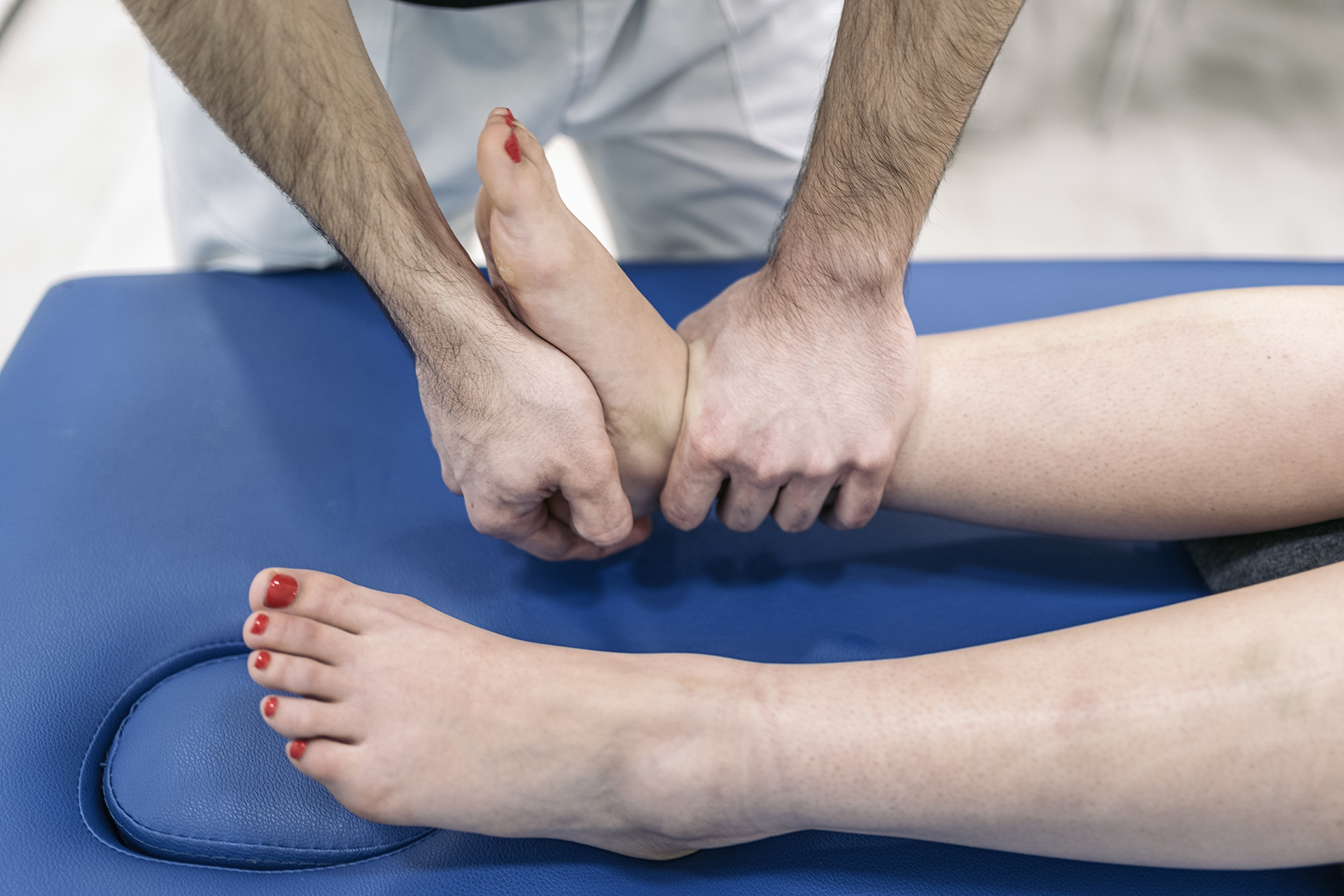
Conditions That Mimic Ankle Gout
As the symptoms of ankle gout (sudden pain, swelling, redness and warmth) can resemble those of several other joint conditions, a precise diagnosis is crucial. Misdiagnosis not only delays proper treatment but can also lead to unnecessary interventions or the worsening of an underlying condition.
One of the most common misinterpretations is a severe ankle sprain, especially when there is no clear memory of trauma. Though both conditions can cause swelling and difficulty bearing weight, sprains typically follow an apparent injury, and the pain of a sprain tends to align with ligament damage rather than joint inflammation.
Another condition that is often confused with gout in the ankle is septic arthritis, a joint infection that can mimic the acute presentation of gout. Unlike gout, septic arthritis is usually accompanied by systemic symptoms such as fever and chills. It requires urgent medical attention as delays can lead to joint destruction.
Rheumatoid arthritis, an autoimmune condition, also affects the ankle. However, it typically develops gradually, accompanied by persistent discomfort in several joints on both sides of the body. Gout, on the other hand, tends to target a single joint at a time and typically appears suddenly, often overnight.
Osteoarthritis of the ankle also causes joint pain, but the pattern is quite different. This wear-and-tear arthritis progresses slowly and is often activity-related. Pain tends to flare up with use rather than suddenly, like gout.
Some other conditions often confused with gout in the foot include bursitis, which involves inflammation of the fluid-filled sacs that cushion the joints. When it occurs near the ankle or foot, it can cause swelling and tenderness, but without the crystal buildup that defines gout.
Ganglion cysts are benign, jelly-like lumps that tend to form near joints or tendons and can also bear some similarities to gout. However, ganglion cysts are usually soft to the touch and don’t produce the heat, redness or sudden pain of a gout flare.
Another source of confusion is hallux rigidus, a degenerative condition that affects the big toe joint. Although it can cause pain and stiffness, especially during movement, the progression is slow, and the pain is mechanical rather than inflammatory, like with gout.
Similarly, sesamoiditis, an inflammation of the two small sesamoid bones located beneath the big toe, may cause focused pain when walking or running. However, it lacks the sudden intensity and systemic nature of an actual gout attack.
Finally, bunions caused by structural misalignment of the big toe joint can produce redness, swelling and even joint pain. However, bunions develop over time and are often associated with footwear and biomechanics rather than an internal chemical imbalance.
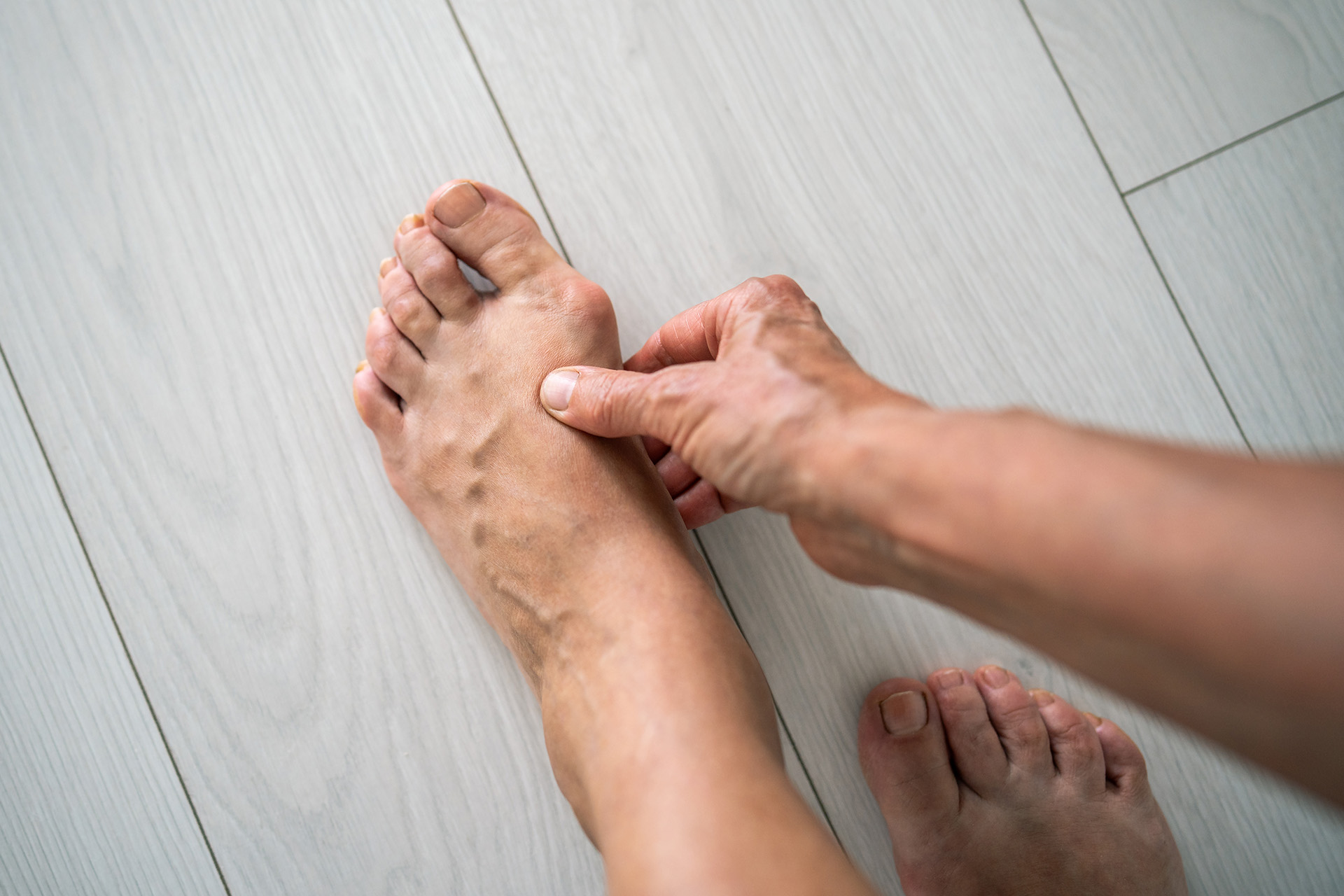
Managing Flare-Ups: Immediate Relief for Ankle Gout
Medications such as NSAIDs and corticosteroids can ease inflammation during a gout flare but are short-term solutions rather than a long-term fix. If you’re wondering how to cure gout in ankle, it’s key to get to the root of the issue, which NSAIDS and corticosteroids do not do. While helpful in managing immediate pain, they don’t prevent the cycle of joint damage and may have side effects if used frequently. If you’re questioning how to get rid of gout in the ankle, lifestyle modifications are more effective. Cutting back on alcohol and purine-heavy foods plays a role in lowering uric acid levels. Still, for those with frequent or severe episodes, these changes are rarely enough on their own to keep the condition under control.
Advanced Podiatric Interventions
Podiatrists offer management that goes beyond traditional medications for gout in ankle joints. At The Foot Practice, we use evidence-based therapies in our gout in ankle treatments, addressing both immediate symptoms and long-term joint health.
Extracorporeal Shockwave Therapy (ESWT) is a revolutionary approach to treating gout in ankle joints. This non-invasive therapy delivers precisely targeted acoustic waves to affected tissues, stimulating cellular repair mechanisms and, importantly, dissolving urate crystal deposits. The therapy increases blood circulation to ankle tissues, flushing out the inflammatory mediators and delivering essential nutrients for tissue repair.
Shockwave Therapy also stimulates the production of growth factors that promote angiogenesis the formation of new blood vessels, improving long-term circulation to previously damaged areas. This increased blood flow helps prevent future crystal accumulation and supports ongoing tissue healing.
At The Foot Practice, we assess how gout in ankle joints affects your overall foot and leg function, identifying compensatory movement patterns that may be contributing to symptoms in other areas. This comprehensive assessment ensures that the management of the condition addresses not only the immediate symptoms of gout but also the broader impact on your mobility and function.
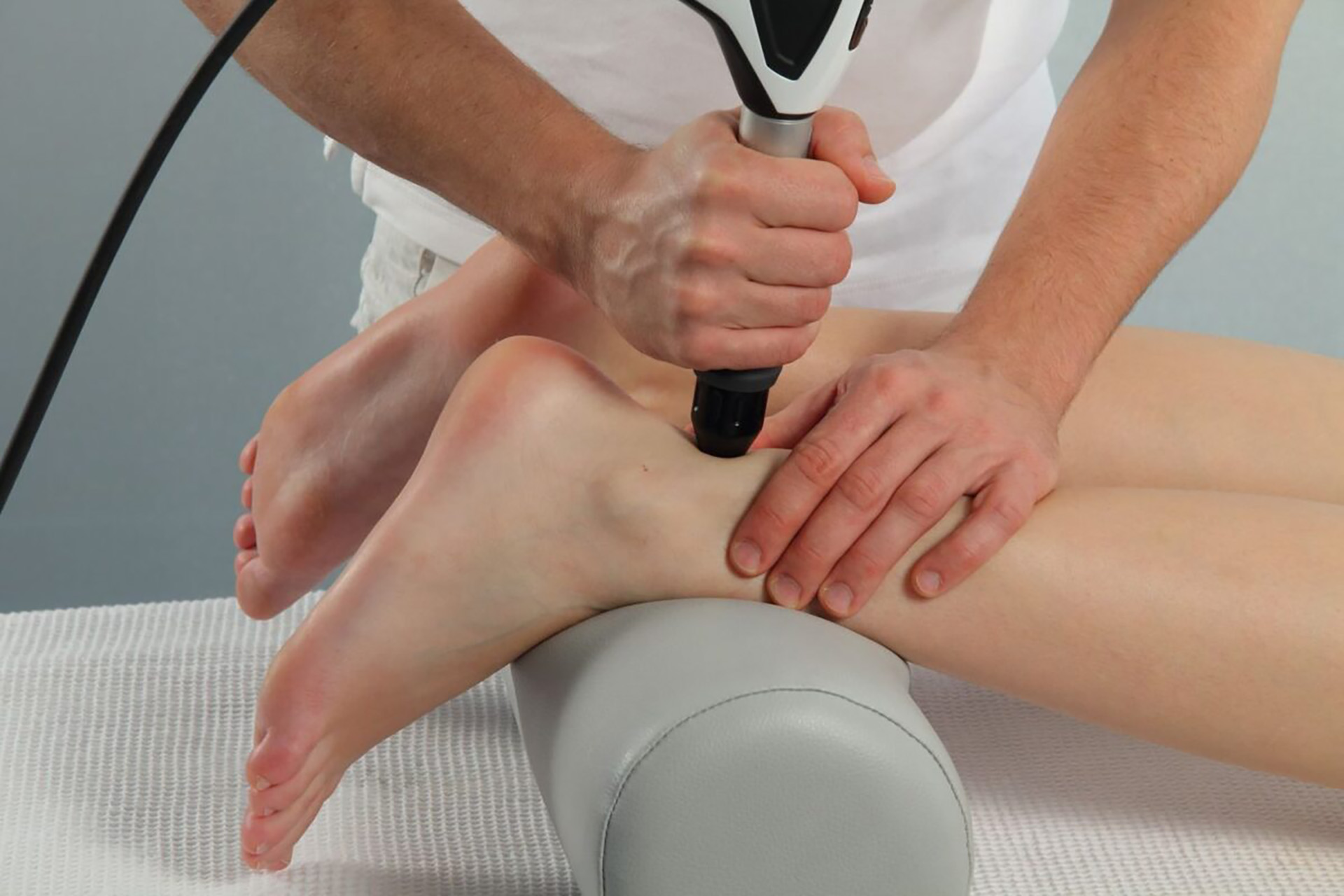
Comorbid Health Conditions and Gout
Gout rarely exists in isolation. It often co-exists with other health conditions that can complicate its management. High blood pressure, kidney disease and obesity are common comorbidities that can increase uric acid levels and the risk of gout attacks.
Certain medications, such as diuretics, can also increase uric acid in the body, making gout symptoms worse. For those with kidney disease, the risk of developing kidney stones from excess uric acid is a serious concern. Managing these health conditions by controlling blood pressure, monitoring kidney function, and reviewing medications with your doctor can help lower uric acid levels and reduce the frequency and severity of gout attacks.
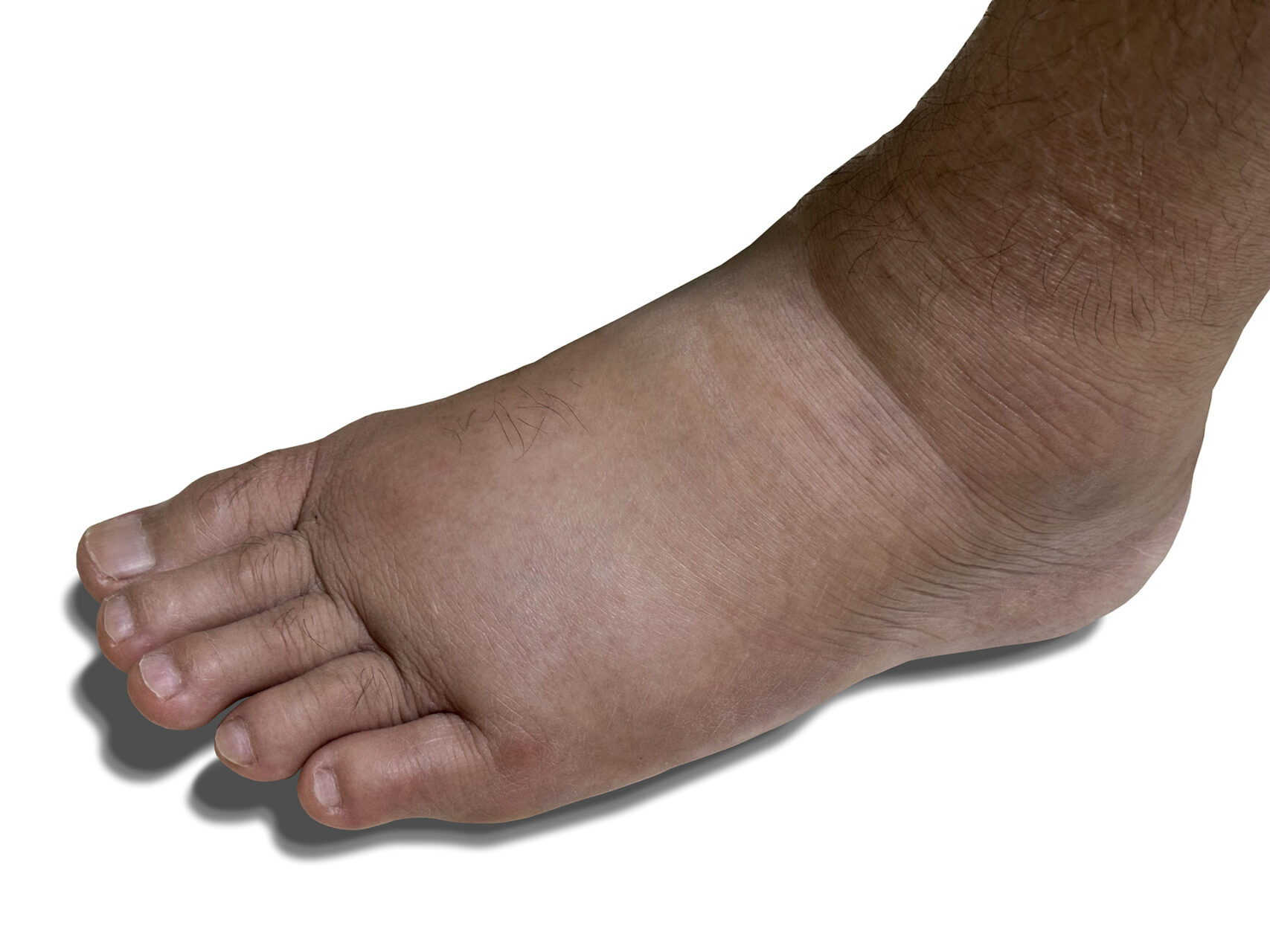
Prevention Strategies and Lifestyle Modifications
There is nothing as simple as a singular cure for gout in the ankle. It’s more important to adopt a holistic approach that addresses metabolic imbalances while promoting joint health and well-being. Diet plays a significant role, particularly in reducing purine-rich foods such as organ meats, certain seafood and excessive alcohol. Sugary drinks and foods high in fructose can also increase uric acid levels and should be limited.
Hydration is also key. Adequate fluid intake helps maintain kidney function and promotes the elimination of uric acid, thereby reducing the risk of crystal formation. Importantly, in tropical Singapore, it is essential to stay hydrated, especially during intense physical activity.
Weight management also plays a role in the development of gout in the ankle. Excess weight increases uric acid production and also places more stress on the ankle joints, making it more likely for the condition to flare up. Maintaining a healthy weight can reduce the frequency and severity of these conditions.
Long-term prevention requires a combination of lifestyle changes and, when necessary, medication. For those with chronic gout, consistent management is key to controlling uric acid levels, helping to prevent future attacks.
Why Choose Specialised Podiatric Care
At The Foot Practice, our experience with complex ankle conditions enables us to address not only the immediate inflammatory process but also the underlying biomechanical and structural factors that contribute to recurrent gout.
Our approach combines the latest technology with proven clinical expertise to deliver the most effective interventions available, ensuring your care is tailored to your individual needs and lifestyle. Contact The Foot Practice today to book a comprehensive assessment with our experienced podiatry team.

